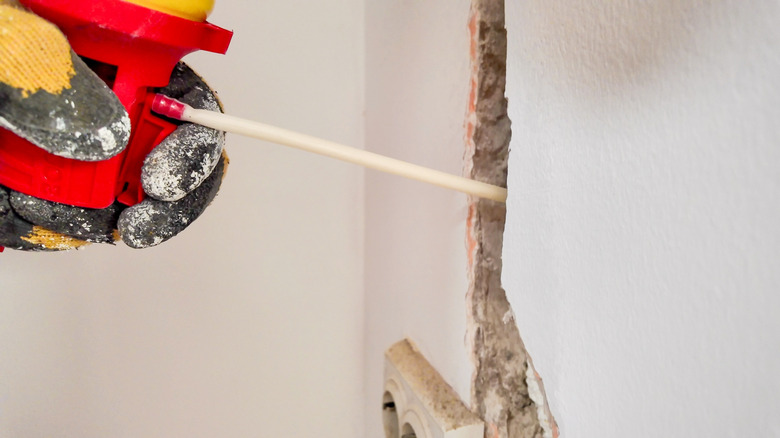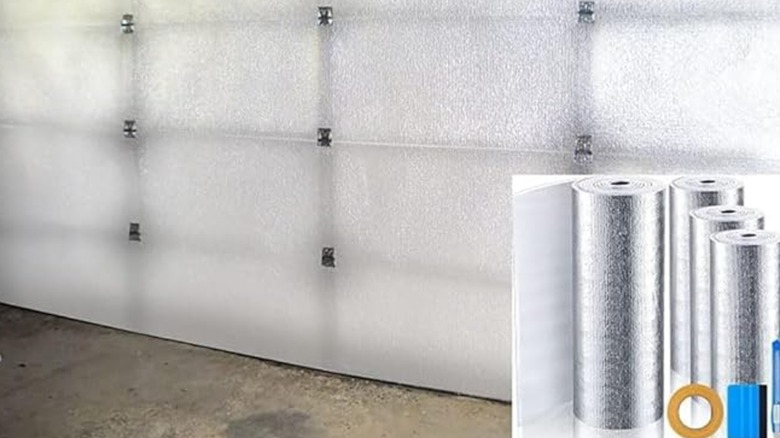Successful DIY Methods To Insulate A Garage From Freezing Winter Temps
We may receive a commission on purchases made from links.
Cold winter weather can make an unheated garage a rather unpleasant area of your home. Sure, you can still use a freezing cold garage to park your car just fine, but how do you deal with the unbearably low temperatures when you need to use the space for an extended period of time? Insulating your garage is the solution to this common problem. This will keep the cold out and help your garage remain at a warmer temperature. And luckily, you can attempt this yourself rather than hiring a professional to complete the project if you want to save a bit of money. Successful DIY methods to insulate a garage from freezing winter temps include applying foam insulation spray inside of cracks and gaps and covering the inside of the door with the best type of insulation material for your garage.
If the bottom of your garage door is not already lined with weatherstripping, consider adding it to further insulate the space as well. Each of these insulation methods are simple enough to pull off on your own without the help of a professional. They are also relatively affordable, especially when compared to the price of having your garage professionally insulated. To put the cost savings into perspective, insulation installers typically charge about $40 to $80 an hour. You can dodge those fees by using these successful DIY methods to insulate your garage from freezing winter temperatures yourself.
Seal cracks and gaps with foam insulation spray
Filling cracks and gaps to keep the cold outside and the warmth outside is an easy way to insulate your garage. To do this, you will need to purchase a foam insulation spray, such as the Loctite Tite Foam Big Gaps Spray from Amazon. Thoroughly read the product instructions on the insulation spray you purchase to learn how to work with the specific foam you have. The procedure will vary slightly from product to product, but in general, you should start out by laying down a drop cloth to protect the surrounding surfaces. Protect yourself with gloves and goggles, too.
Next, apply the spray according to the instructions in cracks and gaps in corners, along the wall, and anywhere else you notice them. Only fill these spots half way since the foam will expand to fill the remaining space. Allow the foam to cure, and remove any excess using either a foam sealant solvent or a serrated utility knife. When you are done, you will have a bit of extra protection against the cold. Sealing cracks and gaps in your garage with foam insulation spray also provides the added benefit of keeping bugs out of your house all winter long. This spray should be used in conjunction with other insulation methods for maximum effectiveness. If you do not already have weatherstripping at the bottom of your garage door, consider adding it, too. To install it, remove any old damaged weatherstripping, clean the bottom of your door, push your new material into place at the bottom of the door, and cut the material to size.
Cover the inside of your garage door with insulation material
An uninsulated garage door also welcomes the cold inside during winter. To insulate your garage door, start out by determining which R-value range your insulation material needs to be. The R-value indicates the intensity of the insulation. Detached garages require insulation with an R-value of 0 to 6, attached garages require 7 to 9, heated garages require 10 to 13, and a garage directly below a living space require a minimum of 14.
After purchasing the appropriate insulation material, your first installation step is to mark where your fasteners will be located. Next, apply double sided tape over those marks and stick retainer clips onto those pieces of tape. At this point, you'll need to measure your door panels and cut your insulation material to the size of each panel. Place your insulation pieces into each of the panels, and secure them with your retention clips. To do this, cut small holes into the insulation to allow the backside of clips you previously installed to poke through. Then, snap the front of the retention clips over the back pieces. That's all there is to this easy DIY insulation method. Products such as the NASA TECH Garage Door Insulation Kit make this process easy since they often come with just about everything you need to get the job done. If you decide to go this route, just remember to purchase a kit with the R-value you need (the insulation in the NASA TECH kit has an R-value of 8). Installation instructions will vary from kit to kit, too, so make sure to read them carefully.


